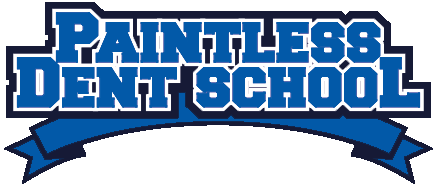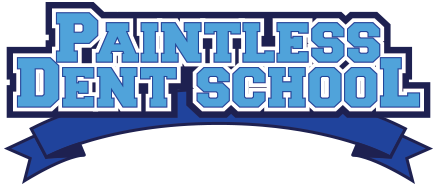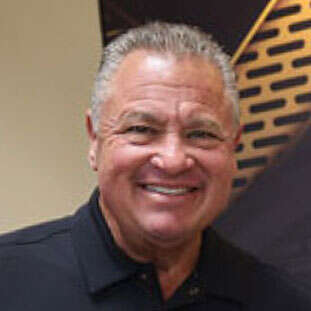Glue Pulling Training
Hey, aspiring technicians and veterans alike! You’re here because you’ve got a keen interest in learning the art of glue pulling. Welcome to the comprehensive guide you didn’t know you needed but will be glad you found. Strap in, this is going to be a fun ride into the Paintless Dent Repair (PDR) industry!
Table of Contents
- What is Glue Pulling Training?
- Why Glue Pulling is a Necessity
- Essential Tools and Techniques
- Step-by-Step: How to Glue Pull
- FAQs
- Wrap-up
What is a Glue Pulling Training Course?
Ever bumped your car and then gasped at the sight of that nasty dent? Well, glue pulling training teaches you how to fix those blemishes, and the best part is that you don’t need to repaint the vehicle afterward. The Paintless Dent Repair training industry has seen significant improvements over the years, with glue pulling emerging as a go-to technique. Glue Pulling Training is an educational program designed to teach you the specifics of using adhesive materials to repair dents without damaging the paint on the vehicle. It’s a subset of the broader Paintless Dent Repair (PDR) field, focused exclusively on the glue pulling method. This technique is especially useful for dents that are not easily accessible or are in areas where traditional PDR methods may not be effective. Whether you’re an auto-repair enthusiast or looking to carve a career in the PDR industry, mastering glue pulling can give you an edge. With advancements in technology, glue types, and specialized tools, the efficiency of glue pulling has revolutionized the industry, making it more popular than ever.
Glue Pull Repair VS. Traditional Paintless Dent Repair (PDR) Tools
Glue pulling, known in industry lingo as GPR (Glue Pull Repair), is a subset of traditional PDR. While traditional PDR tools focus on pushing metal with rods from the underside of the dent, glue pulling involves specialized glue tabs and pull devices. In traditional PDR, you’re often limited by the accessibility of the dent from the backside, which makes it difficult to repair dents in areas like deep door creases or the roof. In glue pulling training, you’ll learn how to use specialized dent pulling devices to effectively pull a variety of damages, including challenging creases and pressure dents, restoring the vehicle’s surface to its original form. Glue pulling, on the other hand, works from the outside of the panel, making it a much more versatile approach. With the use of specialized glue tabs and pull devices, you can adhere to the dented area and utilize leverage to pull the dent out. This opens up a whole new range of possibilities for repair, including dents on double metal panels and seams, areas that are traditionally challenging for PDR methods. Additionally, GPR is generally quicker than traditional methods for certain types of damage, helping you complete cleaner and faster repairs. The glue pulling method has been a game-changer in the industry, widening the scope of what can be repaired without resorting to more invasive techniques. It’s a more versatile skill set, allowing you to tackle even the most challenging dents.
Personal Anecdote Alert:
When I was a newbie in the Paintless Dent Repair (PDR) industry, I was filled with all the enthusiasm you can imagine. I had my set of traditional PDR tools and thought I was ready to conquer the world—or at least, the world of door dings and minor dents. So, when I got the chance to remove a door ding on a friend’s car, I was ecstatic. I got my rods, found my angle, and started pushing the metal back into place. But oh boy, I bit off more than I could chew. The result looked more like a mini-crater than a smooth door panel, and my friend was, let’s say, less than thrilled.
That embarrassing experience made me realize that mastering traditional PDR tools wasn’t enough, especially for complex dents and hard-to-reach areas. I knew I had to broaden my skill set, so I decided to give glue pull training a shot. The first time I attended a master glue pull training session, it was like a lightbulb went off in my head. The specialized glue tabs, the pulling devices, and the techniques—everything was so different from what I was used to, yet it seemed to make so much sense.
Once I got the hang of it, I decided to revisit that dreaded door ding—this time with my newly acquired glue pull techniques. And would you believe it? The dent came out as smooth as butter, with no repainting needed. That experience was a turning point for me. Not only did it save me from future embarrassments, but it also made me realize the immense potential of glue pulling in the PDR industry. Since then, I’ve been an advocate for comprehensive training, because trust me, knowing both traditional and glue pull methods can make you a Swiss Army knife in the world of dent repair.
Why Taking a Master Glue Pull Course is a Necessity in the PDR Industry
Trust me, if you’re in the business of repairing hail damaged vehicles or just a weekend warrior wanting to clean up dings and dents, glue pulling is a necessity. You see, not all dents are easily accessible from behind, and that’s where this technique shines.
Taking a master glue pull course doesn’t just make you more versatile, it makes you more employable and valuable in the industry. When you can tackle those tricky dents that are out of reach for traditional PDR methods, you become an asset to any body shop or repair service. The comprehensive training you’ll receive in a master course will also introduce you to the variety of tools and materials, like different types of glue and pulling devices, that are essential for effective glue pulling. You’ll also gain the hands-on experience and confidence needed to tackle even the most challenging repair jobs.
Moreover, hail damage is a recurring issue, especially in certain parts of the country, and being able to offer glue pulling services makes you indispensable during those busy hail seasons. The technique is not just about fixing hail and door dings; it’s about offering a cleaner, faster, and more efficient repair process. It revolutionizes your approach to dent damage repair, elevating your skill sets to a whole new level. So, whether you’re a seasoned pro or new to the field, a master glue pull course is an invaluable addition to your repertoire.
Repairing Hail Damaged Vehicles with PDR Training
During hail season, body shops get flooded with dent removal repair. Glue pulling lets you make cleaner and faster repairs, making it a highly sought-after skill. With glue pulling in your toolkit, you can actually take on more jobs during the peak hail season because the method is often quicker and less labor-intensive than traditional techniques. Glue pulling training becomes a necessity when repairing hail damaged vehicles, offering a fast and effective solution for restoring car exteriors to their original condition. This efficiency is a win-win for both body shops and customers: shops can clear their backlog faster and customers get their cars back sooner, minimizing their downtime. In an industry where time is money, being able to offer quick yet high-quality repair services can set you apart from the competition and make you the go-to expert for hail damage repair.
Essential Tools and Techniques Used in Repair Training
Here’s the meat and potatoes of our discussion. To master glue pulling, your training program needs to include a variety of tools and techniques.
Glue Tabs and Pull Devices in Glue Pulling Training
These are your bread and butter. You’ll be using different types of glue tabs, from small ones for minor dings to larger ones for substantial dents.
Mini Lifter and Slide Hammer
Once the glue has set, you can use a mini lifter or slide hammer to pull the dent out. The choice of tool depends on the size and location of the dent.
FAQ: What type of glue should I use?
Different types of glue work better under different conditions. It’s a matter of stubbornness and temperatures. Yes, you read that right. Some glues work better in cold weather, while others excel in the heat.
Step-by-Step: Glue Pulling for Paintless Dent
Ready to dive into the nitty-gritty? Let’s get you from zero to hero with our master glue pull repair training course. This course curriculum includes:
- Preparation: Cleaning the area and selecting the right glue.
- Application: How to apply the glue properly on the tab.
- Pulling: Using the mini lifter or slide hammer effectively.
- Finishing Touches: Removing excess glue and polishing.
FAQs on Paintless Dent Repair Training and Glue Pulling Techniques
- Is glue pulling for paintless dent repairs different from traditional methods?
Yes, instead of pushing metal with rods, you’re pulling it with special tabs and devices. - How long are courses for master glue pulling?
The duration can vary depending on the training options available. Some courses are more comprehensive and may last several weeks. - Can I learn how to glue pull online?
Absolutely, there are online PDR training courses that offer additional courses for master glue training techniques. Perfect for those who can’t attend in-person classes.
Glue Pulling for Paintless Dent Repairs: What You Need to Know
Alright, folks, that’s a wrap on Glue Pulling training! Remember, whether you’re a newbie or a seasoned Paintless Dent Removal tech looking to up your game, proper instruction and supervision are essential. Glue pulling training not only instills you with the knowledge and confidence to tackle a variety of dents, but it also teaches you the latest techniques to master the art of paintless dent repair. With one on one guidance in glue pulling training, you’ll hone your PDR skills using a wide range of dent pulling devices, ensuring you become proficient in tackling various types of dents. So, what are you waiting for? Dive into this educational experience that includes industry-relevant tools and become a better PDR technician.



